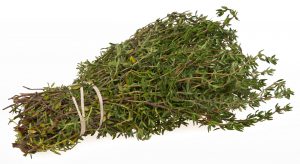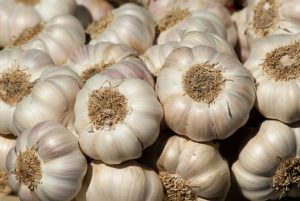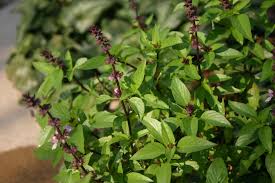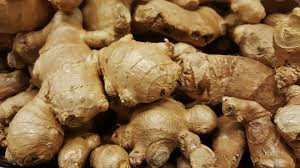Best Herbs to Plant in South Florida

In our previous articles, we discussed flowers to plant in the fall in South Florida and also vegetables to plant in the fall in South Florida but we will be turning our attention to some of the best herbs that can be grown during the fall months. Garden herbs have their place in our gardens and really do deserves our attention, the aromas and the flavors that herbs produce are just simply amazing.
I have worked with herbs for many years and, to be honest, it’s worth the effort because of the many benefits they offer, herbs are not only used to flavor foods but medical science has also seen the benefits of herbs that promote healing naturally and without any side effects. Among the many garden herbs, some of my favorites are basil, chives, thyme, rosemary, and garlic. Below however we will be taking a closer look at herbs to plant in the fall in South Florida.
We have established in our last two articles that the fall months present not only the perfect opportunity to do some spring cleaning but also to plant some of our favorite plants to reap a harvest. Growing herbs during the fall months also have its rewards that will pay off in so many ways. Our first on the list and one of my favorites is rosemary.
Herbs to Plant in the Fall in South Florida

1. Rosemary
Rosemary will wake up your favorite dishes with its spicy flavors, rosemary is a hardy perennial evergreen that is native to the Mediterranean, northwestern Spain, and Portugal growing along the hills. Rosemary thrives best in USDA Hardiness Zones 7 to 10, rosemary should be planted 2-3 ft apart. Install rosemary in an area that gets lots of sunlight.
The soil type should be rich and well-drained with a pH of 6.0 and 7.0, mixing in several inches of aged compost or other rich organic matter will boost or build the soil for a healthier plant. Rosemary should be watered once a week in the summer and once every 2 weeks in the spring and fall, if the leaves turn a pale green or the plant is stunted apply a slow-release fertilizer or a water-soluble fertilizer that’s diluted to offer help.
Once established the stems of rosemary can be cut anytime, to dry rosemary use a rack or hang upside down in bunches that are tied together with a piece of string. Once the leaves are dried strip the stems. The springs can also be preserved by freezing in an airtight plastic bag or in vinegar. Rosemary can be used to season veal dishes, stews, gravies, chicken, pork, lamb, turkey, fish, etc…
2. Garlic

Known for its ability to lower blood pressure along with bringing relief to other (Traditional Medicine) health issues garlic is another favorite that can be planted in your fall gardens, this perennial herb is native to South Asia and northeastern Iran. It’s believed that garlic has been around for several thousand years dating back as far as ancient Egypt.
Garlic thrives best in USDA Hardiness Zones 1 to 5, and with 6 to 8 hours of sunlight, garlic grows best in sandy, loam well-drained soil that has a pH of 6.0 t0 7.0. Plant garlic 12 to 16 inches apart. Garlic requires between a half-inch and one inch of water per week. During the fall months ensure that the soil is evenly moist not waterlogged which can lead to rot, a 19-19-19- fertilizer is ideal for your garlic to grow healthy. Before applying fertilizer read and follow the manufacturer’s directions for the best results.
In general, when the lower leaves start to brown garlic can be harvested, a sure way however to find if garlic is ready to harvest is to dig up a few bulbs, if the cloves fill out the skin it’s time to harvest. Harvesting garlic typically occurs during the late spring to the mid-summer months. Garlic can be used to season stews, gravies, soups, veal dishes, chicken, fish, pork, lamb, turkey, garlic bread, shrimp, etc…
3. Basil

Basil has a strong pleasant fragrance, this herb is an annual, while some types are technically short-lived in tropical native climates, this garden herb is believed to be native to tropical regions from Central Africa to Southeast Asia. Basil grows best in USDA Hardiness Zones 10 to 11 and requires 6 to 8 hours of sunlight per day. A rich moist well-drained soil with a pH of 6 to 7 is ideal.
Basil should be planted 12 to 16 inches apart, this annual loves to stay moist, not waterlogged or water saturated, one inch of water every week is sufficient. Basil can be fertilized with a good organic fertilizer every 3 weeks. As soon as the plant reaches 6 to 8 inches tall the leaves can be harvested. harvesting the leaves during the early morning hours will ensure that basil retains its strong flavors.
Picking the leaves on a regular basis will encourage new growth, basil can be used to flavor stews, gravies, soups, rice, chicken fish, pork, veal dishes, turkey, lamb, pizza, sauces, salads, etc…
4. Cilantro

Cilantro has also made its way on this list of herbs, cilantro is an annual that will go to (re-seeding themselves) seed if allowed to flower. In mild climates and due to the short lifecycle you can get 2 cycles of cilantro in one season. Cilantro is native to southern Europe and Asia, this garden herb thrives best in USDA Hardiness Zones 2 to 11.
For your cilantro to grow its best plant in the full sun, the soil type should be loamy, moist, and well-drained, the seeds of cilantro can be planted 1/2 inch deep into the soil with a spacing of 2 inches apart. The bloom time for cilantro are spring, summer, and fall months, the soil of cilantro should be regularly moist but not waterlogged which will lead to root rot.
About an inch of water per week is ideal, along with a good balance fertilizer for your cilantro will work wonders, before applying fertilizers read and follow the manufacturer’s direction for the best results. Cilantro can be used to season grilled shrimp skewers, chili, tacos, enchiladas, burrito bowls, stews, soups, sour cream, coleslaw, rice, etc…
5. Thyme

As a child I can still remember the days when I would smell such a sweet aroma coming from the kitchen, it would be my father cooking with thyme. I love cooking with thyme as well because it has such a pleasant odor and flavor that will enhance your food recipes. This perennial is native to Eurasia and is grown on a wide scale worldwide.
Thyme thrives best in USDA Hardiness Zones 5 to 9, the ideal location to plant thyme is in the full sunlight, thyme will thrive best in a soil that’s chalky, loamy, sandy, and well-drained with neutral soil pH and a planting space of 12 to 24 inches apart. Thyme is drought-tolerant and can survive on very little water, this herb should be watered every 10 to 15 days.
Thyme should also be fertilized every spring with an all-purpose 10-10-10-ration fertilizer, apply fertilizer at half strength to discourage thyme from producing too many leaves which will decrease the potency of thyme’s fragrant oils. Thyme can be added to rice, gravies, soup, stews, chicken, fish, pork, lamb, turkey, duck, veal dishes, roast potatoes, etc…
6. Mints

Who wouldn’t agree that mint has such a strong flavor that is so pleasant, this perennial herb is used in so many ways, most species of mints are native to Europe or Asia but a few however are native to Australia. This herb has been dated back as far as 300 BC, mint thrives best in USDA Hardiness Zones 3 to 8. When planting mint locate an area that gets full to partial sunlight.
Give this herb when planting spacing of 18 to 24 inches apart a word of caution here however when planting mint I would give them a bed of their own because mint is known as an invasive herb and will take over the planting area. The ideal soil type for the mint plant is loamy, moist well-drained soil with a pH range of 6. o t0 7.5, the soil of mint should be evenly moist and not waterlogged which will encourage root rot.
Give your mint a good soaking especially in high temperatures because mint will wilt, mints can receive water typically 2 times per week. Besides its famous use for making tea mint can be used to flavor lamb, ham, side dishes, ice cream, cookies, chocolates, candies, Greek and Middle Eastern dishes, sauces, salads, etc…
7. Ginger

Ginger has many medical uses and can be used to flavor food recipes as well, ginger is a herbaceous perennial that’s native to Southeast Asia. Ginger’s natural habitat includes humid partly-shaded parts in humid moist tropical and sub-tropical areas in the Southeast Asia forest. The USDA Hardiness Zones for ginger are Zones 9 to 12 when planting ginger locate an area that gets part shade with 2 to 5 hours of dapple sunlight each day.
Install gingers 12 inches apart, ginger prefers a soil that’s rich well-drained sandy loam or clay, with a pH of 5.5 t0 6.5, water ginger deeply and regularly during the growing season. Usually at least an inch a week. Keep in mind however not to overwater gingers which will encourage root rot.
Besides its relieving stomach pain when used as tea ginger is used to flavor food recipes such as grilled pork tenderloins, ginger chicken salads, Asian vegetable beef soup, ginger salmon, etc…
8. Parsley

Parsley is popular for its use in garnishing dishes, this biennial is native to the eastern Mediterranean and thrives best in USDA Zones Hardiness 2 to 11. Parsley should be planted in direct sunlight. 6 to 8 hours of sunlight a day is ideal but can handle some light shade, this garden herb grows best in well-drained soil that’s rich in organic matter.
Parsley should be planted about 6 to 8 inches apart, larger plants can be spaced 8 to 10 inches apart, water parsley deeply at least once a week and twice if your soil is sandy and drains fast. Once or twice during the growing season fertilize parsley with a 5-10-5 commercial fertilizer, before application read and follow the manufacturer’s direction for the best results. As said earlier parsley is popular for garnishing food recipes but this herb can also be used in soups, sauces, salads, salsas, meatballs, marinades, etc…
Aerogarden-Smart
Garden Systems
In case you missed it, I wrote an article several months ago on the best Aerogarden Systems, these indoor mini gardens are smart gardens and are perfect to grow herbs indoors especially if you don’t have outdoor space. These smart indoor gardens are great for growing edibles during the winter months, you heard right these gardens can be placed on your kitchen table or kitchen countertop to grow and have an endless supply of fresh herbs year-round. For more on these Amazing Garden Systems and how you can have your very own click on the link and Buy Now.
The final word on herbs to plant in the fall in South Florida
Garden like a pro and eat an endless supply of your very own homegrown herbs that are grown and harvested fresh from your gardens, follow these steps to success. Growing herbs are so rewarding and have its benefits so see for yourself and reap the rewards of the time invested in your outdoor garden or with the Aerogarden Systems why not have the best of both worlds by growing herbs both out and indoors you will be so happy with the results why wait go for it and get you Aerogarden System Today.
About the author
Norman loves being in the garden, both at home and for his job....
he is 'Natures Little helper' being outdoors, growing his vegetables and flowers from an early age.
Now having spent over 22 years in the profession he want to give some of his knowledge to others...
his vast array of hints and tips you will find scattered over this site will help you no end growing plants in your garden.

Hello, I love your page! In the following sentence though, what is “loam”?
Garlic thrives best in USDA Hardiness Zones 1 to 5, and with 6 to 8 hours of sunlight, garlic grows best in sandy, loam well-drained soil that has a pH of 6.0 t0 7.0.
In the next paragraph, you are writing about basil, but then you wrote garlic-
Basil should be planted 12 to 16 inches apart, this annual loves to stay moist, not waterlogged or water saturated, one inch of water every week is sufficient. Garlic can be fertilized with a good organic fertilizer every 3 weeks.
Great article! Very nicely put together and very informative. It is clear and concise and reads well. I love, love, love herbs and I grow some of them myself because I just love using them fresh rather than dried out.
I wish you the best of luck,
Lisa
Hello and thanks much for your help, I am also happy to help. Loam is a soil that holds the right amount of water but will allow excess moisture to drain. I hope this helps and all the best to you.
Pretty much identified almost all of my favourite herbs, I personally have parsley, rosemary, thyme, basil and chives at the top of my favourites. I noticed you didn’t mention chives though, does it not grow very well in South Florida or is it just not very popular there? Chives seem to be one of the easiest types of herbs to grow
There are so many herbs, I only included a few because of so many, I love chives, chives are also one of my favorites. Thanks again and all the best to you have a good day!
I just love that you mention Rosemary, Thyme, Basil, and Garlic. Those are my favorite ingredients to add to my dishes. I was looking exactly for rosemary to place to grow in my pot, and later bring it to the garden, but when I saw other herbs, it really made me happy.
I really like to bake some sweet potatoes with carrots, and onions and add garlic too, them because it gives such an aroma.
I would definitely try it in my own backyard, as I just started to find those products sometimes not available in supermarkets or the quality is not satisfying. Homemade will definitely make dinner tastier for us.
I am so happy to help, wishing you all the best of success with your garden project.